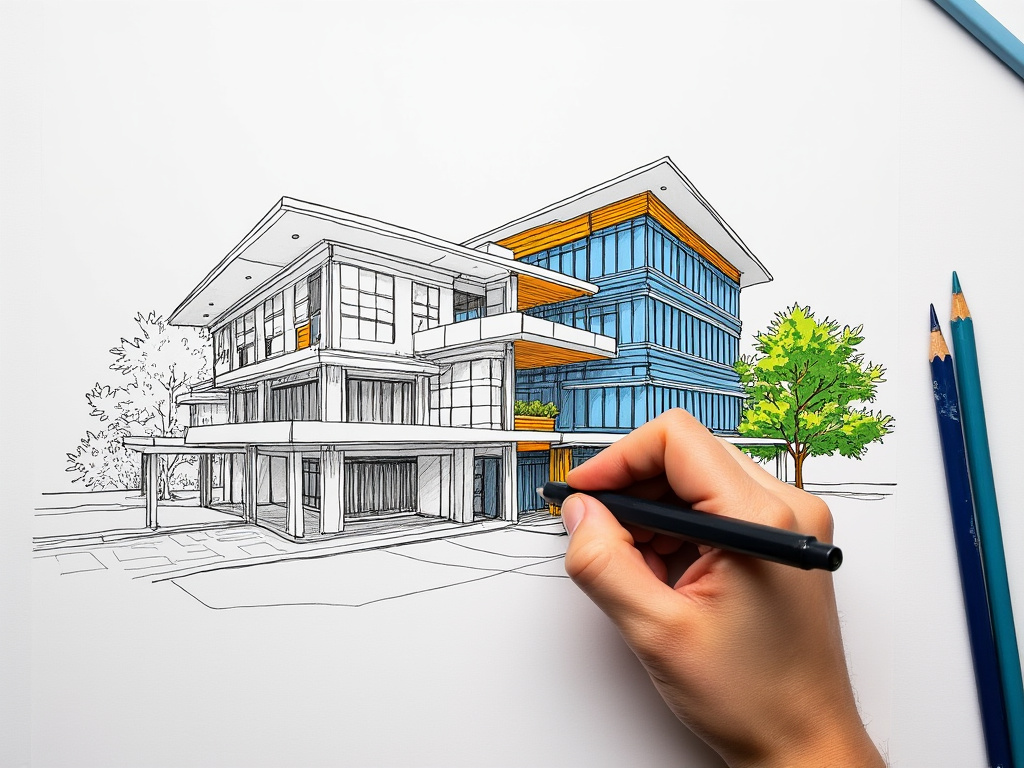How to Find a Good Architect for Designing Your Home: A Comprehensive Guide
Designing a home is a significant investment that requires careful planning, and one of the most crucial steps in this process is finding the right architect. An architect’s role extends beyond creating blueprints; they turn your vision into a reality, ensuring that your home is not only aesthetically pleasing but also functional and compliant with local regulations. Here’s a detailed guide to help you navigate the process of finding a good architect for your home.

1. Understand the Role of an Architect
Before beginning your search, it’s essential to understand what an architect does. Architects are professionals trained to design buildings and oversee their construction. Their responsibilities typically include:
- Conceptual Design: Translating your ideas and needs into a visual concept.
- Planning and Zoning Compliance: Ensuring that your design meets all local building codes and zoning laws.
- Project Management: Overseeing the construction process to ensure the design is executed as planned.
- Sustainability: Integrating energy-efficient and environmentally friendly solutions into the design.
Knowing these responsibilities helps you set realistic expectations and better communicate your needs.
2. Define Your Needs and Goals
Start by defining what you want from your new home. Consider factors such as:
- Size and Layout: How many rooms and levels? Open-plan or segmented spaces?
- Style: Modern, traditional, minimalist, or a fusion of styles?
- Budget: Set a realistic budget, including a buffer for unexpected costs.
- Sustainability: Are you interested in eco-friendly features like solar panels, green roofs, or rainwater harvesting?
- Future Needs: Think about long-term needs, such as aging-in-place considerations or space for a growing family.
Having a clear vision of your needs will help you find an architect whose style and experience align with your project.
3. Research Potential Architects
Finding potential architects can start with a simple online search, but there are several more targeted approaches:
- Referrals: Ask friends, family, or colleagues who have built homes for recommendations.
- Professional Associations: Check the websites of local or national architecture organizations, such as the American Institute of Architects (AIA) or the Royal Institute of British Architects (RIBA), which list qualified professionals.
- Online Portfolios: Websites like Houzz, Architizer, and Behance allow you to browse architects' portfolios.
- Local Directories: Look at local directories or community forums where architects advertise their services.
4. Evaluate Their Portfolio
Once you have a list of potential architects, the next step is to evaluate their portfolios. This involves:
- Diversity of Work: Look for versatility in their projects. An architect who has worked on a variety of styles and scales might be more adaptable to your specific needs.
- Consistency in Quality: Check for consistent quality in design, materials, and finishes.
- Completed Projects: Ensure they have completed projects similar to yours in scope and style.
- Attention to Detail: Look for thoughtful details in their designs that show a deep understanding of space, light, and materials.
5. Check References and Reviews
Client testimonials and reviews provide insight into an architect’s work ethic, reliability, and ability to meet deadlines. Don’t hesitate to ask for references from previous clients. Key questions to ask include:
- Communication: How well did the architect communicate throughout the project?
- Problem-Solving: How did they handle unexpected issues or changes during construction?
- Budget Management: Were they able to stay within the budget?
- Satisfaction: Would the client hire the architect again?
6. Meet and Interview the Architect
Meeting potential architects in person is crucial. This allows you to assess whether you have good chemistry, which is important for a smooth working relationship. During the interview, discuss:
- Your Vision: Explain your goals and see how the architect responds. Are they enthusiastic? Do they offer constructive feedback?
- Their Process: Ask about their design process, timelines, and how they handle revisions.
- Team and Collaboration: Will you be working with the architect directly, or will you be handed off to a junior team member?
- Fees: Discuss their fee structure. Architects typically charge a percentage of the project cost, a fixed fee, or an hourly rate. Ensure you understand what is included in their fee.
7. Understand the Contract
Once you’ve chosen an architect, the next step is to sign a contract. The contract should clearly outline:
- Scope of Work: What exactly will the architect be responsible for?
- Deliverables: What documents and services will be provided, such as schematic designs, construction drawings, and site visits?
- Fees and Payment Schedule: A breakdown of costs and when payments are due.
- Timeline: Estimated dates for key milestones in the design and construction phases.
- Termination Clause: Conditions under which the contract can be terminated by either party.
It’s wise to have a lawyer review the contract to ensure you fully understand the terms.
8. Establish Clear Communication Channels
Effective communication is vital to a successful project. From the start, establish how you will communicate with your architect. This could include:
- Regular Meetings: Set up a schedule for regular progress meetings.
- Decision-Making Process: Agree on how decisions will be made and who has the final say on critical issues.
- Documentation: Ensure that all communications and decisions are documented to avoid misunderstandings.
9. Monitor the Design and Construction Process
Even after you’ve hired an architect, your involvement doesn’t end. Stay engaged throughout the project:
- Review Designs: Regularly review design drafts and provide feedback.
- Site Visits: Attend site visits to ensure the construction is following the plan.
- Budget Tracking: Keep track of expenses to avoid budget overruns.
- Issue Resolution: Address any issues or changes promptly to keep the project on track.
10. Assess the Finished Product
Once your home is complete, conduct a final walkthrough with the architect to ensure everything meets your expectations. If there are any issues, they should be addressed promptly.
11. Post-Project Relationship
A good architect-client relationship doesn’t end when the project is completed. Stay in touch for any future needs, such as renovations or extensions, and don’t hesitate to recommend their services if you’re satisfied with the outcome.
Conclusion
Finding the right architect for your home is a critical step that can make or break your project. By understanding their role, clearly defining your needs, thoroughly researching candidates, and maintaining open communication, you can ensure that your dream home becomes a reality. Taking the time to find an architect who aligns with your vision and working style will pay off in the form of a home that not only meets your needs but also stands the test of time.


